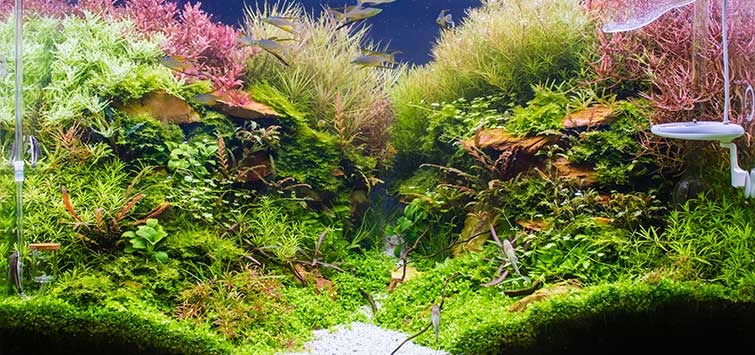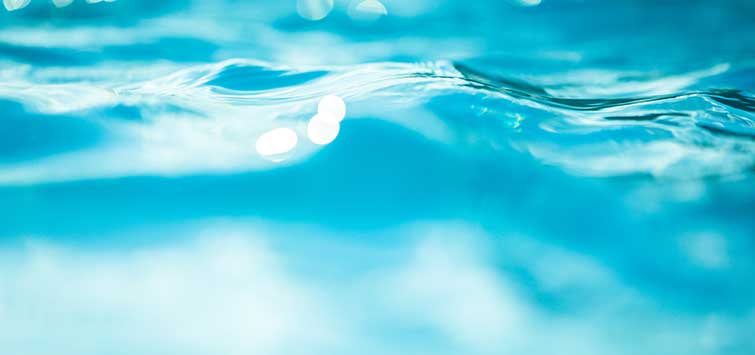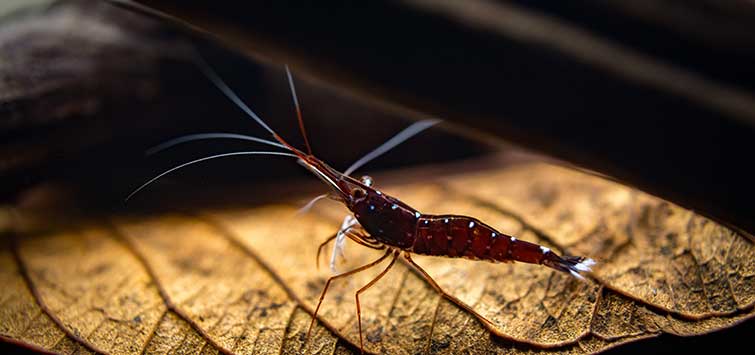Maintaining Water Quality in the Nature Aquarium
Author: Takashi Amano
The world-renowned aquatic plant maestro discusses the importance of water quality in the Nature Aquarium and suggests ways to keep your parameters up to par.
Water Is a Key Aquarium Maintenance Issue
Once a Nature Aquarium layout has been created, and the aquatic plants are growing properly, there is still work to be done in maintaining the layout attractively. A Nature Aquarium is intended for living things such as aquatic plants and fish, and maintaining healthy living things is closely tied to creating a beautiful layout. We must first develop a good environment in an aquarium for a living organism to have a healthy life. The water that fills an aquarium is like air for us human beings; it is the most fundamental part of an aquarium. This month, we will discuss matters related water changes and water quality in an aquatic plant layout.
Can You Use Tap Water?
Many of us use tap water for an aquarium, and the water quality of this tap water varies depending on the country and the area. The tap water in the area of Japan where I live has a good enough quality to be used in an aquarium without causing any problem except for its temperature and residual chlorine. Since both hot and cold water come out from the same tap, I can simply adjust the temperature to about 25°C (77°F), fill an aquarium and remove the residual chlorine from the water with an agent.
You must watch the water temperature when changing water. If you use water that is too cold, it can damage the microorganisms in the filter even in the summer time and sometimes causes water to suddenly become cloudy. On the other hand, when water temperature is very low in winter and it is warmed up in a boiler, we should not do a large water change all at once with such water. In summertime, when the temperature of the tap water is higher it is no problem to change ½ of the tank water all at once. However, in winter I recommend changing only ¼ of the tank water at a time to be on the safe side. In other seasons I change approximately 1/3 of the water once a week on the average.
Why Water Changes Matter
Water changes are performed regularly in Nature Aquarium to maintain a stable water quality. Infectious agents and pathogenic microbes tend to multiply and fish and aquatic plants tend to get sick easily in old water that has not been changed for a long time. A water change refreshes the tank water and helps to maintain the health of fish and aquatic plants.
The change in the water quality is smaller if a small amount of water is changed regularly rather than performing a large water change after a long period of no water changes. A large fluctuation in pH and the water hardness can affect fish and aquatic plants adversely. It can irritate the body surface of fish and may cause the leaves of Cryptocoryne to melt.
Another purpose of a water change is to control the proliferation of algae by removing excess nitrogen and phosphorus and the organic matter that becomes the source of the excess. In a newly set-up aquarium, the number of microorganisms in an external filter is low and the water quality is unstable, and therefore frequent water changes are required. If filter media is brand new, it takes three to four weeks for the water quality to stabilize. During this period, I change water every two to three days. With time, however, the water quality stabilizes and aquatic plants grow well in the aquarium. Then such large frequent water changes are no longer necessary.
This of course is just a general guideline, using my basic water change method as an example. If there is a problem with your local tap water, or if you are growing fish and aquatic plants that are very sensitive to a change in water quality, you need to use a different technique for water changes.
Addressing Water Quality Problems
The first thing that comes to my mind when considering possible problems with water quality is high water hardness. This problem can be resolved by the use of water filtered though a reverse osmosis (RO) filter. However, that water must be supplemented with liquid fertilizers, since most aquatic plants need an adequate amount of minerals, which the RO water lacks.
Also, in addition to residual chlorine, tap water contains metal ions, some of which may affect the body surface or the gill membrane of fish adversely. When I change water for the aquarium with newly arrived fish or a fish that is sensitive to a change in water quality, I add a water conditioner that detoxifies metal ions and makes the water gentler to fish.
Working with Change-Sensitive Plants
The tank that requires the most attention during a water change in Nature Aquarium is an aquarium planted mainly with Cryptocoryne. Among the many aquatic plants used in Nature Aquarium layouts, Cryptocoryne is especially sensitive to changes in water quality. If the water quality changes greatly with a large water change, it develops small holes in its leaves or its leaves may melt suddenly overnight. Once the water quality stabilizes, it develops new submersed leaves again. However, Cryptocoryne generally grows slowly, and so it takes a long time to develop attractive submersed leaves again.
To avoid this situation, I use a special water changing method for them in the Nature Aquarium Gallery at ADA headquarters. I use water from a large aquarium (180 cm or larger) in a good condition where a lot of stem plants and other aquatic plants are growing densely. The large aquarium is maintained routinely with regular water changes using tap water. The larger the water volume, the more stable the water quality, and its water tends to stay cleaner. In addition, in an aquarium where aquatic plants are grown densely and fish are raised, natural organic elements dissolve into water adequately and render the water mild and less irritating to the sensitive Cryptocoryne plants.
Since this method is not easy to follow in every home, for tanks planted with Cryptocoryne I recommend that you do small water changes using a bucket of tap water conditioned with the aforementioned water conditioners, both the dechlorinator and the metal-ion detoxifier. Especially in the case of a Cryptocoryneaquarium, regular small water changes are recommended, since a sudden water change after a long period of no water change alters the water quality drastically and tends to cause their delicate leaves to melt.
DATA
Aquarium: Cube Garden Clear W120 x D45 x H60 (cm)
Lighting: Solar I (NAG-150W “Green”) x 2 units, turned on for 10 hours per day
Filter: Super Jet Filter ES-1200 (Bio Rio)
Substrate: Aqua Soil, Nile Sand, Power Sand Special L, Bacter 100, Clear Super, Tourmaline BC, Penac W/for Aquarium, Penac P
CO2: Pollen Glass Beetle 50 mm, 3 bubbles per second via CO2 Beetle Counter (using Tower/20)
Aeration: 14 hours after the light is turned off using Lily Pipe P-4
Additives: Brighty K, Green Brighty STEP2, Green Gain
Water change: 1/3 once a week
Water quality: Temperature 26ºC, pH 7.0, TH 30 mg/l, NO2 <0.02 mg/l, NO3 < 1 mg/l, COD (chemical oxygen demand) 6 mg/l
Aquatic plants: Isoetes japonica, Eleocharis vivipara, Echinodorus angustifolius, Vallisneria nana, Cryptocoryne wendtii “green,” Cryptocoryne wendtii “tropica,” Microsorium sp., Fontinalis antipyretica
Aquatic animals: Rasbora vaterifloris, Puntius rhomboocellatus, Puntius narayani, Trigonostigma espei, Otocinclus sp., Crossocheilus siamensis, Caridina japonica
[Note: The hardware itemized above represents the author’s specific choices; equivalent results may be obtained with other equipment and accessories—Eds.]
DATA
Aquarium: W350 x D75 x H75 (cm)
Lighting: NA Lamp 32W x 18 units and NA Lamp 20W x 20 units, turned on for 10 hours per day
Filter: External filter (Bio Rio, NA Carbon)
Substrate: Aqua Soil, Power Sand Special L, Bacter 100, Clear Super, Tourmaline BC, Penac W/for Aquarium, Penac P
CO2: Pollen Glass Beetle 50 mm x 4, 4 bubbles per second via CO2 Beetle Counter (using Tower/20) x 4
Aeration: 14 hours after the light is turned off using NA Control Timer
Additives: Brighty K; Green Brighty STEP2; Green Brighty Special Lights, ECA, Green Gain
Water change: 1/3 once a week
Water quality: Temperature 24ºC, pH 6.6, TH 20 mg/l, NO2 <0.02 mg/l, NO3 < 1 mg/l, COD 3 mg/l
Aquatic plants: Riccia fluitans, Glossostigma elatinoides, Lilaeopsis novae-zelandiae, Echinodorus tenellus, Eleocharis acicularis, Sagittaria subulata var., Cryptocoryne wendtii “mi oya,” Cryptocoryne albida, Cryptocoryne wendtii “green/tall form,” Cryptocoryne lucens, Cryptocoryne willisii, Cryptocoryne pontederiifolia, Cryptocoryne undulata “red,” Cryptocoryne wendtii “tropica,” Cryptocoryne wendtii“broad,” Cryptocoryne retrospiralis, Blyxa novoguineensis, Cyperus helferi, Hygrophila polysperma, Hygrophila polysperma sp., Alternanthera ocipus, Crinum calamistratum, Eleocharis vivipara, Ludwigia sp. “Cuba,” Rotala sp. “Nanjenshan,” Rotala rotundifolia “colorata,” Rotala rotundifolia “green,”Eichhornia diversifolia, Polygonum sp., Ammania latifolius, Echinodorus angustifolius, Hemianthus callitrichoides “Cuba,” Rotala macrandra sp., Rotala sp., Microsorium sp., Fontinalis antipyretica
Aquatic animals: Melanotaenia maccullochi, Hemigrammus bleheri, Hyphessobrycon megalopterus, Hyphessobrycon heterorhabdus, Moenkhausia pittieri, Hemigrammus ulreyi, Thoracocharax stellatus, Hyphessobrycon pyrrhonotus, Pristella maxillaris, Paracheirodon simulans, Trigonostigma heteromorpha, Hyphessobrycon vilmae, Rasbora vaterifloris, Puntius rhomboocellatus, Puntius denisonii, Hyphessobrycon herbertaxelrodi, Nematobrycon palmeri, Otocinclus sp., Crossocheilus siamensis, Caridina japonica
[Note: The hardware itemized above represents the author’s specific choices; equivalent results may be obtained with other equipment and accessories—Eds.]

.png?h=595&iar=0&w=2781&hash=5FD5E69473BCC22199FBFA2FB71B6033)



